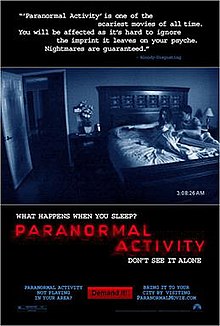The definition of a sleeper hit is generally any type of media (song, TV show or film) is marketed as under the radar and has the quality of being able to be promoted with top tier marketing tool. Sleeper movie hits seemingly come out of nowhere, attracting excited film audiences that spread the movie’s success through word of mouth.
These movies are often produced well of the radar. In the end, sleeper movie hits succeeded by turning the movie business upside down by gaining a number one spot at the box office. Also, the profits of a sleeper hit at the box office usually end up being more than their budget.
Sleeper hits have a trend of tearing up and exposing the limitations of Hollywood’s predictable thinking about what makes a hit. For the audience, it wakes up to the potential of their expectations and be widely successfully in terms of good reviews.
These are just some examples of sleeper hits that I’ve seen:

“CROUCHING TIGER, HIDDEN DRAGON”
(SONY PICTURES CLASSICS, 2000)
Budget: $17 million
Domestic gross: $128 million
“Crouching Tiger, Hidden Dragon” was indeed a hidden gem from the mainstream that remained off the radar during its production. Most Westerners were not familiar with famous Hong Kong action stars Chow Yun-Fat and Michelle Yeoh. Although the movie was first released in December 2000 in the US, it had a worldwide release on January 12, 2001. The subtitled movie became a hit with a domestic box office of $128 million. The movie had many achievements bestowed upon it such as the highest-grossing foreign-language film in U.S. history, earned the Oscar for best foreign-language film and led in an Asian movie revival in the West.

“SAW” (LIONSGATE, 2004)
Budget: $1.2 million
Domestic gross: $55.2 million
The film “Saw” succeeded with an complex, moralistic plot achieved with precision and no small amount of blood. Being a low-budget horror film, the movie was co-written by director James Wan and actor Leigh Whannell and was screened in a midnight slot at Sundance. The movie gradually gained $20 million during the weekend of Halloween. Therefore, a new horror franchise was established that has earned more than $650 million worldwide with yearly sequels. Also, it made Jigsaw a first new top-ranking horror villain in more than a decade.

“PARANORMAL ACTIVITY”
(PARAMOUNT, 2009)
Budget: $15,000
Domestic gross: $107.6 million
First-time director Oren Pali’s homemade ghost story was filmed for only $15,000 on a camcorder over the course of seven days. The movie was unable find any potential buyers after appearing at Screamfest in 2007 and then Slamdance in 2008. Finally, Paramount released it at midnight screenings in only 12 theatres, using by a stealth marketing campaign that convinced fans they were discovering the movie for themselves. The cheap movie became an instant mega-hit ghost blockbuster.
(Source: Reuters )